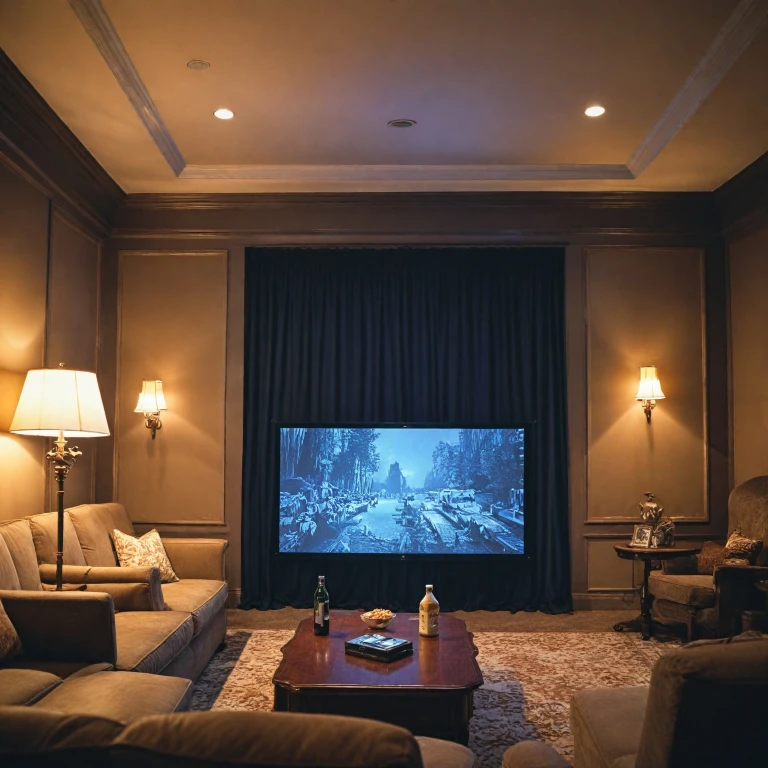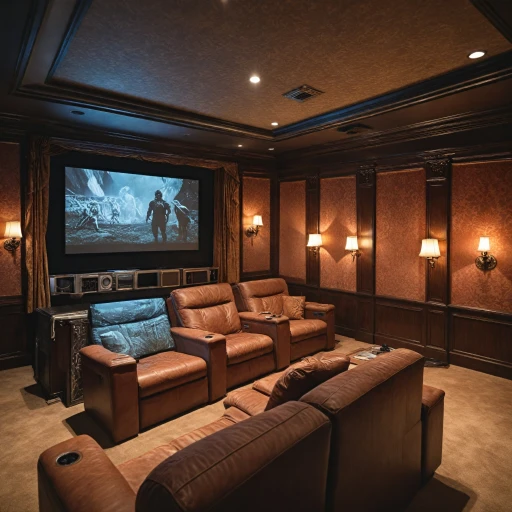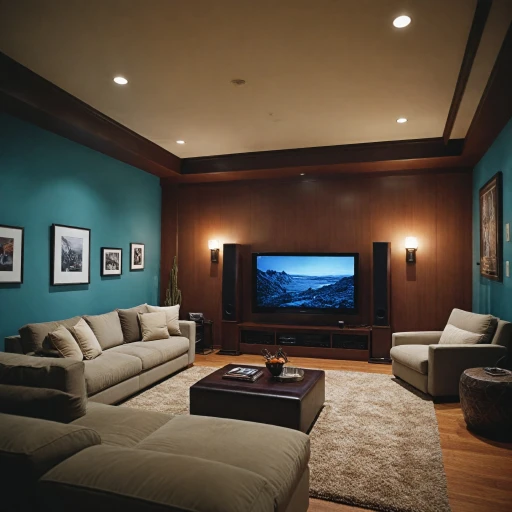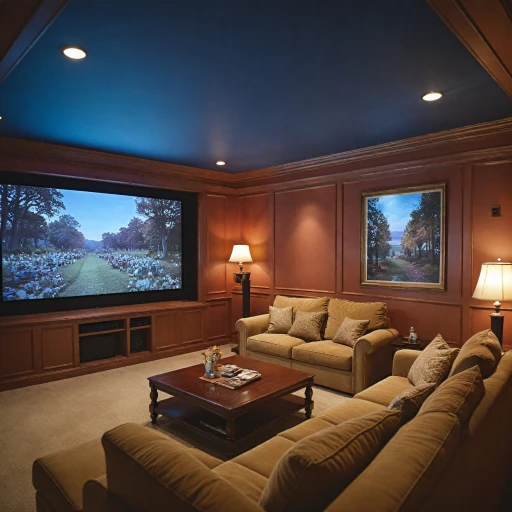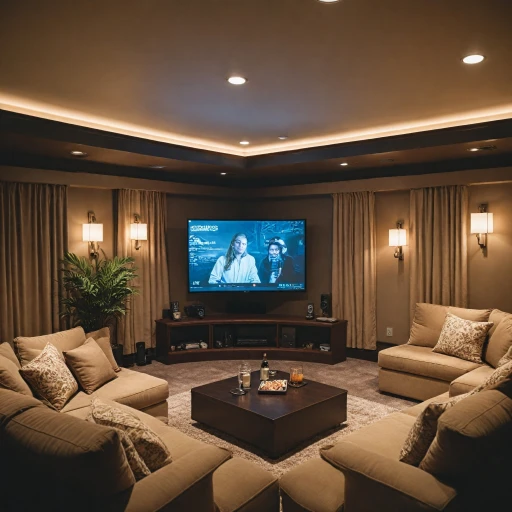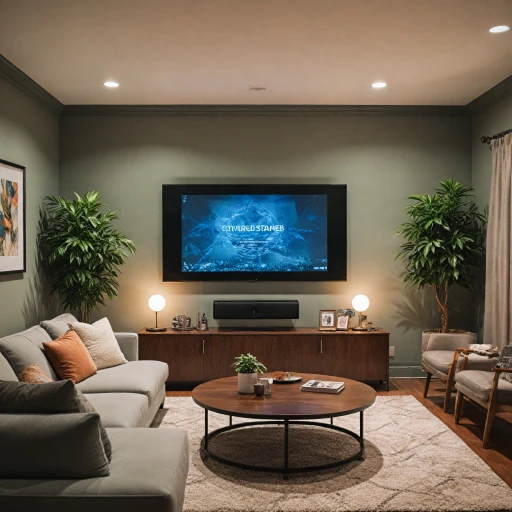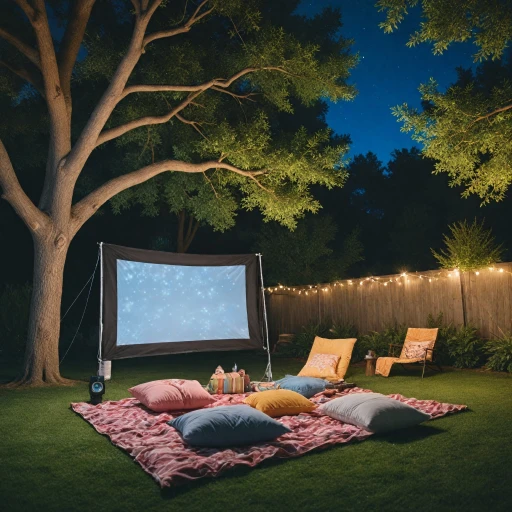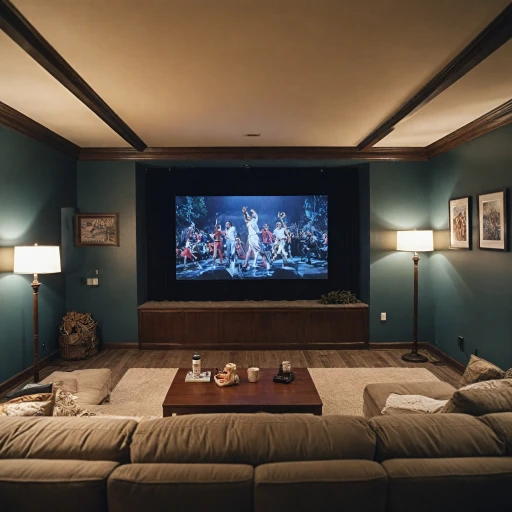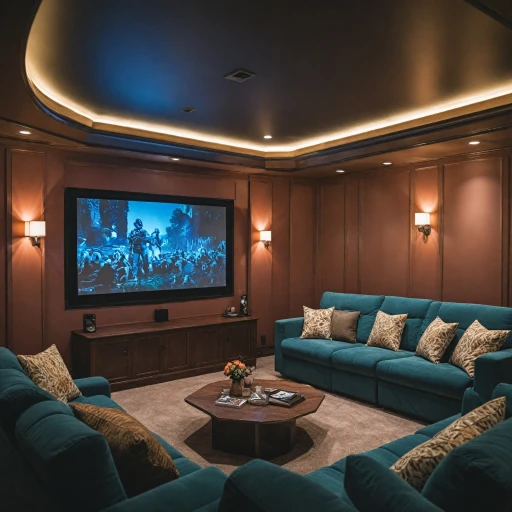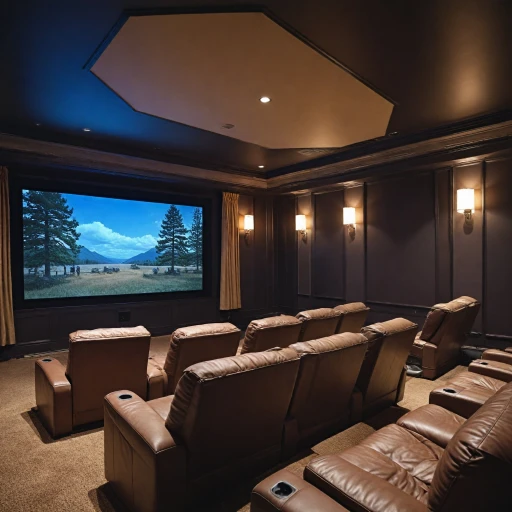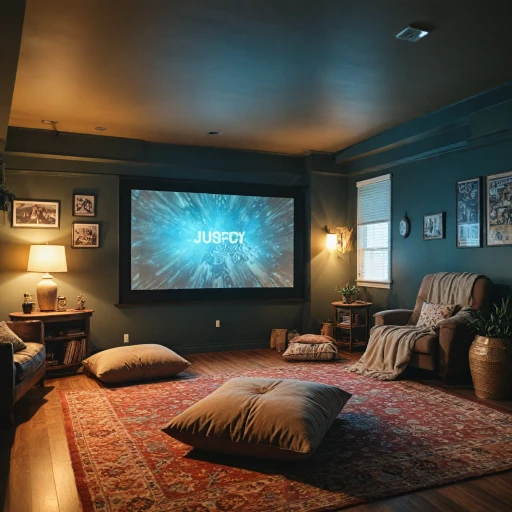
Understanding the Importance of a Projector Stand and Screen
The Foundation of an Immersive Viewing Experience
Incorporating a projector stand and screen into your home theater setup is essential for enhancing your viewing experience. These components may seem secondary, but they hold the essence of how a projection's quality is received. Let’s delve into why they're crucial, focusing on practicality and the specifics that support top performance from your projectors and screens.The Role of the Projector Stand
A well-chosen projector stand ensures stability and optimal positioning of the projector. The stand keeps your device secure, mitigating any risk of falls or vibrations that could distort the image on the screen. With multiple types—from tripod projector stands to more robust frame-mounted options—the choice depends primarily on your space and the portability needed. Those setting up a dedicated home theater might prefer a fixed stand or even a ceiling mount, while outdoor projector setups benefit from lightweight, adjustable tripod stands perfect for any diy outdoor movie night.Significance of the Right Projection Screen
A high-quality projector screen enhances the image by offering a smooth, uniform surface. This is critical as the material and the aspect ratio of the screen affect the projection's clarity and brightness. Consider whether you need a portable projector screen for flexible use, or an elite series screen for a dedicated space. Factors like screen material and screen size, such as whether an 80-inch or 100-inch diagonal is best, are pivotal decisions. Superior screens, such as elite screens, guarantee a reflective surface that complements the projector type, delivering a crisp, vibrant image. Portable and outdoor screen options abound, and knowing your specific needs is key to maximizing the setup’s effectiveness. Outdoor enthusiasts will find an exploration of motorized screen solutions for patios beneficial in creating a versatile home theater experience that easily transitions from indoor elegance to outdoor charm. Understanding the basics of projector stands and screens is foundational for any cinephile seeking to elevate their home theater experience to the next level.Choosing the Right Projector Stand for Your Space
Finding the Perfect Fit for Your Entertainment Space
When it comes to choosing the right projector stand, the first step is assessing your available space and deciding on the mobility needs. A portable projector stand is an excellent choice if you intend to use your projector in various locations or move it frequently between rooms or even for outdoor projection events. Consider the following factors when making your selection:- Type and Material: The type and material of the stand should match the weight and size of your projector. A tripod projector stand offers flexibility and easy adjustment, while a fixed stand can provide more stability if you have a dedicated theater room.
- Height and Adjustability: Look for stands with adjustable heights and angles. This feature allows you to align the projector perfectly with your projection screen, ensuring a crisp and centered image. This is especially important for screens with a large inch diagonal or varying aspect ratios.
- Capacity and Durability: Ensure that the stand can securely support your projector's weight and size. Check the material quality, as a sturdy frame made from metal or a high-grade plastic can provide lasting support.
- Price and Brand Consideration: Evaluate the stand's price in relation to your budget. Renowned brands often provide reliable and durable products, but budget options can be suitable depending on your needs.
- Ease of Assembly: If you prefer hassle-free setups, a stand that requires minimal assembly or comes with a manual will save you time and effort.
Selecting the Ideal Projector Screen for Your Needs
Finding the Perfect Projection Screen for Your Space
When selecting a projector screen for your home theater, the type of projection screen plays a critical role in delivering the best image quality. Various factors should be considered to ensure your new setup meets your viewing expectations. Firstly, evaluate the screen size that fits your room. Your choice should depend on the space available and the strength of your projector. Typically, a screen size expressed in inches could range from a compact 80-inch diagonal for smaller rooms to an expansive 120-inch for dedicated home theaters. The projector screen material is a vital component that impacts image clarity. Among widely preferred options are matt white screens due to their affordability and versatility in different lighting conditions. Consider elite screens, renowned for manufacturing quality materials, offering improved color reproduction and sharpness. Aspect ratio is another essential aspect when choosing your screen. Common ratios are 16:9 for traditional home theaters, ideal for watching modern television and movies. For an immersive cinema-like experience especially in wider rooms, consider selecting a 2.35:1 screen. When it comes to types of projection screens, choose a fixed frame screen for a permanent setup, as they are sturdy and present consistent tension across the screen surface. Alternatively, if flexibility is a priority, a tripod projector screen provides portability and ease of setup, suitable for indoor or outdoor use. For those interested in outdoor screenings, diy outdoor screens make an excellent choice, but ensure they are weather resistant and portable. Outdoor projectors require outdoor screens specifically designed for handling external conditions without compromising image quality. Regarding the screen's performance, pay close attention to the viewing angle. It determines how far off-center viewers can sit without image distortion. Wider angles permit a larger audience to enjoy the movie. Finally, budget is a consideration, with screens available at different price points. From economic manual screens to high-end series, there's a model suitable for every budget. Examine different styles and weigh features against cost to find the best value. Selecting the ideal screen enhances your home theater’s ambiance, making every viewing experience splendid. For further advice on integrating sound with your visual setup, explore enhancing your home theater experience with a soundbar for your projector at this link.Setting Up Your Projector Stand and Screen for Optimal Viewing
Positioning for the Best Projection Quality
When setting up your home theater projector stand and screen, positioning plays a crucial role in achieving optimal viewing results. Start by ensuring your projector stand is at a suitable height that complements the screen's position. This helps in maintaining a consistent and high-quality image.
Selecting the Appropriate Projection Surface
The material of your projector screen dramatically influences the clarity and brightness of the projected image. Whether you're using an elite screen or a DIY outdoor setup, make sure the screen surface is smooth and free of wrinkles. White screens are common due to their ability to reflect colors accurately, but you can also consider grey or black for specific projection needs, especially in environments with some ambient light.
Optimizing Viewing Angle and Aspect Ratio
It's essential to adjust the viewing angle and choose the correct aspect ratio for the best home theater experience. The screen size—often measured in inch diagonal—should match the room dimensions and seating arrangement to ensure everyone enjoys a consistent image quality. Popular aspect ratios for movie screens are 16:9 and 4:3, so verify your projector's compatibility.
Utilizing Stands and Tripods for Stability
For outdoor projector setups or temporary installations, consider using a reliable tripod projector stand. This offers flexibility and stability, ensuring that your projection screen remains steady during viewing sessions. Portable projector setups benefit from a screen stand or a tripod, especially for outdoor screening events.
Integrating Manual Adjustments
Most projectors and screens come with manual adjustments, allowing you to finely tune the focus, keystone, and zoom settings. Adjust these parameters to eliminate distortion and ensure the projection quality is elite. This may require some trial and error, but the effort results in a superior viewing experience.
Ensuring Adequate Space and Ventilation
Finally, allocate enough space around your projector and stand for airflow to prevent overheating. Positioning your equipment strategically won't just enhance image projection but also extend the lifespan of your devices. It's a straightforward yet effective approach to maintaining your projection systems.
Maintaining Your Projector Stand and Screen
Ensuring Long-lasting Performance
Proper maintenance of your projector stand and screen is crucial to ensure they provide a high-quality viewing experience consistently. Both the stand and the screen can experience wear and tear over time, impacting your projection's image quality and stability.- Regular Cleaning: Dust and dirt are common culprits that can adversely affect your screen and projectors. Regularly wipe down the screen surface with a microfiber cloth. If you're using an outdoor screen or portable projector setup, ensure the surface is cleaned after each use to prevent stains and image distortion.
- Checking Structural Integrity: Especially for tripod projector stands or frame setups, it's essential to inspect the stand for any loose parts or damage. Ensure that all joints and connections in your screen stand are secure, avoiding any risks of collapse during use.
- Ensuring a Secure Fit: Whether you have an elite screens model or a more budget-friendly series, regularly check that the screen is properly fitted within its frame. Check the screen material for any signs of wear, such as tears or wrinkles, that could affect your viewing angle and image quality.
- Protecting Against Moisture: For outdoor projector screens, moisture can be a significant issue. Ensure you store your screen and stand in a dry location when not in use. If you're using a diy outdoor setup, consider investing in covers or cases to protect both the screen and the stand from adverse weather conditions.
Troubleshooting Common Issues with Projector Stands and Screens
Troubleshooting Projector Stand Stability
Projector stand stability issues can often disrupt your viewing experience. If you find that your projector stand is shaky or unstable, consider the material and frame of the stand. Ensuring the surface it's placed on is even can also make a significant difference. Adjustable tripod projector stands are popular due to their flexibility and ease of use, but they can sometimes require more frequent adjustments.
Dealing with Screen Material Wrinkles
Wrinkled projector screens can detract from the projection quality. For a projection screen that has developed creases, consider stretching it using the frame, or in the case of portable screens, tightly fastening it can help. If you are utilizing a DIY outdoor screen, ensure the material is adequately taut. Often, elite screens or movie screens will come with guidelines on handling the screen material, emphasizing the need for a smooth projection surface.
Resolution of Image Issues
The quality of the image projected by home theater projectors can sometimes suffer, leading to distorted or blurred visuals. Confirm that the projector is positioned correctly relative to your screen for optimal focus and image clarity. Verify that the aspect ratio is set appropriately for the type of content you're viewing and that the screen size matches your projector's capabilities.
Screen and Surface Maintenance
Proper maintenance of both the projector stand and screen is critical for sustained performance. Regularly clean the surface of your screens to prevent dust accumulation which can impact projection quality. Use a gentle cloth or a manual screen cleaner designed for the screen material to keep the surface pristine.
Pricing and Replacement Options
Be prepared to evaluate when it's more cost-effective to repair or replace your projector or screens. DIY solutions can often provide short-term fixes, but if issues persist, investing in a durable set from elite or other established brands might save money long-term.
In summary, ensuring the combination of high-quality hardware and proper setup can mitigate most challenges faced with projector stands and screens. Maintaining a keen eye on material wear and adhering to recommended upkeep practices will ensure a consistently superior viewing experience.
